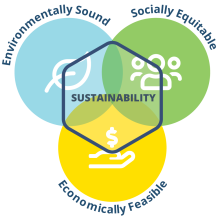Sustainability Initiative

We'd Like Your Input
Please email us at info@harborfieldslibrary.org with your comments and suggestions.
Recommended Reads
-
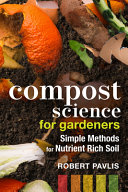
Compost Science for Gardeners: simple methods for nutrient-rich soil
Create your own compost and grow better plants.
With breathtaking clarity, Compost Science for Gardeners demystifies composting practices and helps readers determine the best technique for their unique situation. This comprehensive science-based book is your key to building healthier soil and growing better plants.
Using plain language and easy-to-follow instructions, this essential resource distills and blends the latest scientific research with the author's many decades of knowledge and experience into manageable form, debunking a host of common gardening myths along the way. Learn about:
- The role of composting in the ecological cycle
- Compostable materials to incorporate and those to avoid
- Browns and greens vs the carbon-to-nitrogen ratio
- The full range of composting methods, including cold and hot composting; composting in piles, bins, and tumblers; and pit and trench composting
- Keyhole gardening, food digesters, vermicomposting, bokashi, eco-enzyme fermentation, and more
- The relative merits and impact on the environment of each composting technique
- Using finished compost to improve soil health
Anyone can compost. Whether you are a balcony or backyard gardener, market gardener, small-scale farmer, or homesteader, or even if you are simply looking for a way to keep organic matter out of the landfill, this book will show you how to do it simply, safely, and sensibly.
-
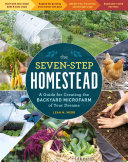
The Seven-Step Homestead: a guide for creating the backyard microfarm of your dreams
When faced with financial uncertainty or a potential disruption to the food supply, more people turn to vegetable gardening — for the joy, satisfaction, and sense of security that comes from growing food. Today’s gardeners want a bit of everything — vegetables, fruit, medicinal herbs, flowers for pollinators, and even chickens for eggs. The dream is to build a diverse landscape that serves multiple functions but achieving that goal can be intimidating and overwhelming. Homesteader Leah Webb shares her strategy for implementing a homestead plan in seven stages, starting small and gradually add more features each year. The Seven-Step Homestead takes readers through the process with a series of doable steps, beginning with establishing one or two raised beds of the easiest vegetables to grow, and gradually building up to the addition of fruit trees and berry bushes on hugelkulture mounds, a coop full of chickens, and a winter’s worth of storage crops. Step-by-step photos from the author's own homestead, accompanied by her hard-earned advice and instruction, make this a one-of-a-kind guide for anyone who aspires to free themselves from reliance on the commercial food system but doesn't know where to start or how to make it happen in a realistic way.
-
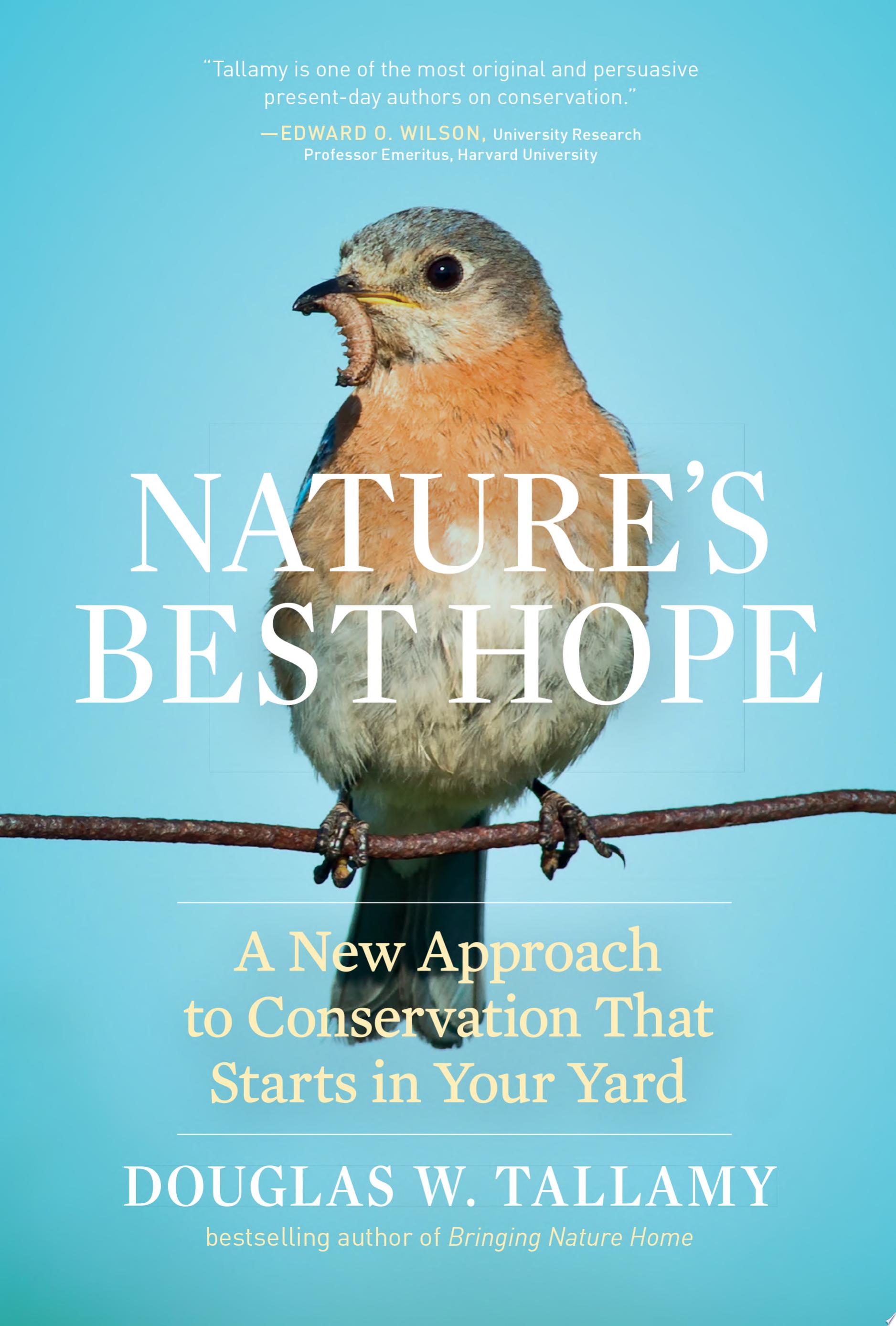
Nature's Best Hope: a new approach to conservation that starts in your yard
A NEW YORK TIMES BESTSELLER
Douglas W. Tallamy’s first book, Bringing Nature Home, awakened thousands of readers to an urgent situation: wildlife populations are in decline because the native plants they depend on are fast disappearing. His solution? Plant more natives. In this new book, Tallamy takes the next step and outlines his vision for a grassroots approach to conservation. Nature’s Best Hope shows how homeowners everywhere can turn their yards into conservation corridors that provide wildlife habitats. Because this approach relies on the initiatives of private individuals, it is immune from the whims of government policy. Even more important, it’s practical, effective, and easy—you will walk away with specific suggestions you can incorporate into your own yard.
If you’re concerned about doing something good for the environment, Nature’s Best Hope is the blueprint you need. By acting now, you can help preserve our precious wildlife—and the planet—for future generations.
-
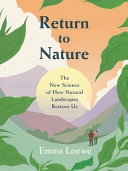
Return to Nature: the new science of how natural landscapes restore us
Discover the new science and ancient wisdom on why nature makes us healthier and happier in body and soul from the co-author of The Spirit Almanac and mindbodygreen's Senior Sustainability Editor.
For centuries, we have known that getting outside is good for us. Yet we have become increasingly disconnected from the earth that nourishes us, with most of us spending 87% of our days indoors. In response, writer and environmentalist Emma Loewe demonstrates the power of nature's healing properties in a guidebook organized by eight landscapes. In each chapter, you'll find research-backed ways to explore that landscape right now and protect it in the future, so that it can be healthy and nurturing for generations to come. Drawing off modern science and innate wisdom, she uncovers:
- Why being by the ocean makes you measurably happierHow living near greenery helps you lives longerThe staggering, illuminating statistic that forests can make you more relaxed within 90 seconds of walking among trees.
Alongside beautiful four-color illustrations that inspire us all to get outside in big and small ways, this stunning book--more urgent than ever--will appeal to anyone looking to connect with the world around them, whether in their neighborhood park or on a backpacking getaway.
-
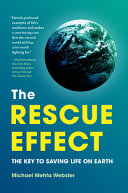
The Rescue Effect: the key to saving life on earth
“Details profound examples of life’s resilience and makes a convincing case that the natural world still has a lot worth fighting for.” —Paul Greenberg, New York Times bestselling author of Four Fish and The Climate Diet
As climate change continues to intensify, the outlook for life on Earth often seems bleak. Yet hope for the future can be found in the “rescue effect,” which is nature’s innate ability to help organisms persist during hard times. Like a thermostat starting the air conditioning when a room gets too warm, the rescue effect automatically kicks in when organisms are stressed or declining.
In The Rescue Effect, Michael Mehta Webster reveals the science behind nature’s inherent resilience, through compelling stories of species that are adapting to the changing world—including tigers in the jungles of India, cichlid fish in the great lakes of Africa, and corals in the Caribbean. In some cases, like the mountain pygmy-possum in the snowy mountains of southeast Australia, we risk losing species without intensive help from people. As observers to—and the cause of—species declines, we must choose whether and how to help, while navigating challenging questions about emerging technologies and the ethics of conservation actions.
Ultimately, Webster argues that there are good reasons to expect a bright future, because everywhere we look, we can see evidence that nature can rescue many species from extinction; and when nature alone is not up to the task, we can help. Combining rigorous research with gripping storytelling, The Rescue Effect provides the cautious optimism we need to help save life on Earth.
-
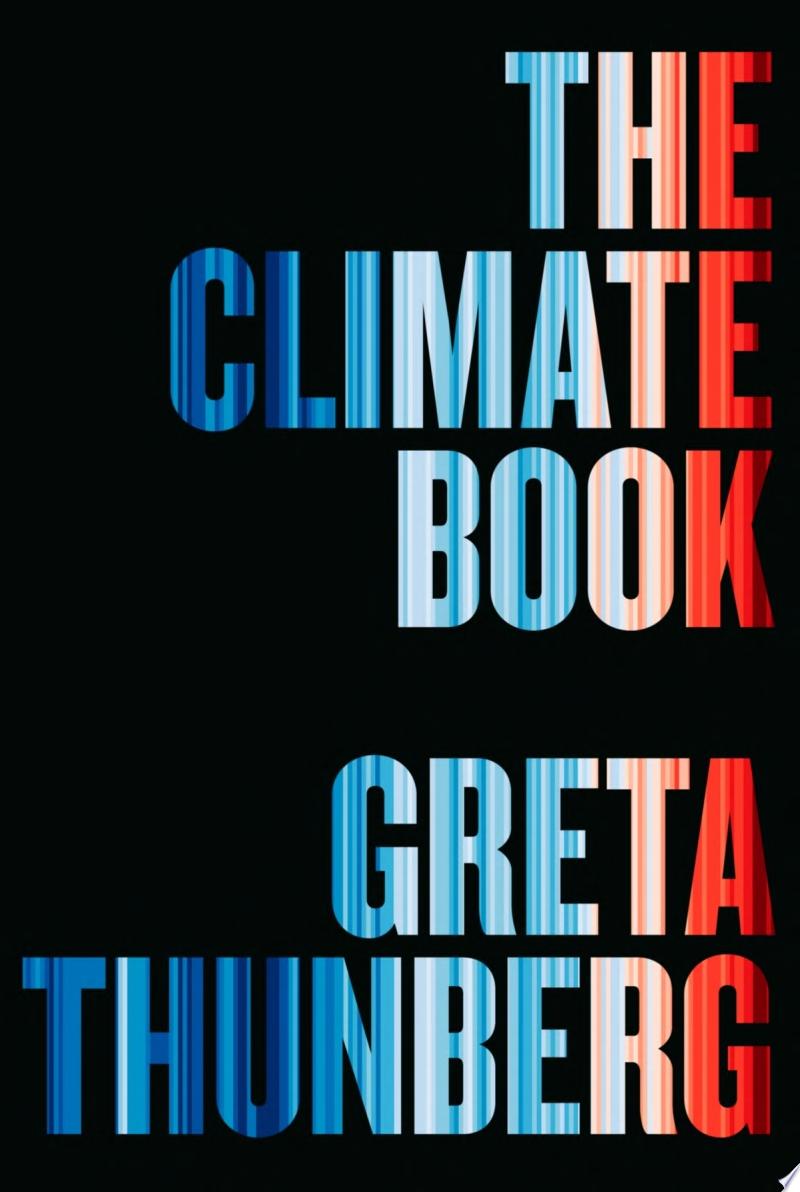
The Climate Book
A NEW YORK TIMES BESTSELLER
We still have time to change the world. From climate activist Greta Thunberg, comes the essential handbook for making it happen.
You might think it's an impossible task: secure a safe future for life on Earth, at a scale and speed never seen, against all the odds. There is hope - but only if we listen to the science before it's too late.
In The Climate Book, Greta Thunberg has gathered the wisdom of over one hundred experts - geophysicists, oceanographers and meteorologists; engineers, economists and mathematicians; historians, philosophers and indigenous leaders - to equip us all with the knowledge we need to combat climate disaster. Throughout, illuminating and often shocking grayscale charts, graphs, diagrams, photographs, and illustrations underscore their research and their arguments. Alongside them, she shares her own stories of demonstrating and uncovering greenwashing around the world, revealing how much we have been kept in the dark. This is one of our biggest challenges, she shows, but also our greatest source of hope. Once we are given the full picture, how can we not act? And if a schoolchild's strike could ignite a global protest, what could we do collectively if we tried?
We are alive at the most decisive time in the history of humanity. Together, we can do the seemingly impossible. But it has to be us, and it has to be now. -
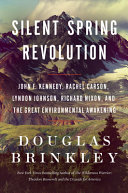
Silent Spring Revolution: John F. Kennedy, Rachel Carson, Lyndon Johnson, Richard Nixon, and the great environmental awakening
New York Times bestselling author and acclaimed presidential historian Douglas Brinkley chronicles the rise of environmental activism during the Long Sixties (1960-1973), telling the story of an indomitable generation that saved the natural world under the leadership of John F. Kennedy, Lyndon Johnson, and Richard Nixon.
With the detonation of the Trinity explosion in the New Mexico desert in 1945, the United States took control of Earth's destiny for the first time. After the Truman administration dropped atomic bombs on Japan to end World War II, a grim new epoch had arrived. During the early Cold War years, the federal government routinely detonated nuclear devices in the Nevada desert and the Marshall Islands. Not only was nuclear fallout a public health menace, but entire ecosystems were contaminated with radioactive materials. During the 1950s, an unprecedented postwar economic boom took hold, with America becoming the world's leading hyperindustrial and military giant. But with this historic prosperity came a heavy cost: oceans began to die, wilderness vanished, the insecticide DDT poisoned ecosystems, wildlife perished, and chronic smog blighted major cities.
In Silent Spring Revolution, Douglas Brinkley pays tribute to those who combated the mauling of the natural world in the Long Sixties: Rachel Carson (a marine biologist and author), David Brower (director of the Sierra Club), Barry Commoner (an environmental justice advocate), Coretta Scott King (an antinuclear activist), Stewart Udall (the secretary of the interior), William O. Douglas (Supreme Court justice), Cesar Chavez (a labor organizer), and other crusaders are profiled with verve and insight.
Carson's book Silent Spring, published in 1962, depicted how detrimental DDT was to living creatures. The exposé launched an ecological revolution that inspired such landmark legislation as the Wilderness Act (1964), the Clean Air Acts (1963 and 1970), and the Endangered Species Acts (1966, 1969, and 1973). In intimate detail, Brinkley extrapolates on such epic events as the Donora (Pennsylvania) smog incident, JFK's Limited Nuclear Test Ban Treaty, Great Lakes preservation, the Santa Barbara oil spill, and the first Earth Day.
With the United States grappling with climate change and resource exhaustion, Douglas Brinkley's meticulously researched and deftly written Silent Spring Revolution reminds us that a new generation of twenty-first-century environmentalists can save the planet from ruin.
Silent Spring Revolution features two 8-page color photo inserts.
-
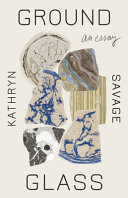
Groundglass
"Could there be something humbling and revolutionary in understanding myself as a site of contamination?"
Groundglass takes shape atop a polluted aquifer in Minnesota, beside trains that haul fracked crude oil, as Kathryn Savage confronts the transgressions of U.S. Superfund sites and brownfields against land, groundwater, neighborhoods, and people. Drawing on her own experiences growing up on the fence lines of industry and the parallel realities of raising a young son while grieving a father dying of a cancer with known environmental risk factors, Savage traces concentric rings of connection--between our bodies, one another, our communities, and our ecosystem. She explores the porous boundary between self and environment, and the ambiguous yet growing body of evidence linking toxins to disease. Equal parts mourning poem and manifesto for environmental justice, Groundglass reminds us that no living thing exists on its own.
-
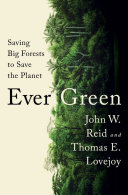
Ever Green: saving big forests to save the planet
Clear, provocative, and persuasive, Ever Green is an inspiring call to action to conserve Earth’s irreplaceable wild woods, counteract climate change, and save the planet.
Five stunningly large forests remain on Earth: the Taiga, extending from the Pacific Ocean across all of Russia and far-northern Europe; the North American boreal, ranging from Alaska’s Bering seacoast to Canada’s Atlantic shore; the Amazon, covering almost the entirety of South America’s bulge; the Congo, occupying parts of six nations in Africa’s wet equatorial middle; and the island forest of New Guinea, twice the size of California.
These megaforests are vital to preserving global biodiversity, thousands of cultures, and a stable climate, as economist John W. Reid and celebrated biologist Thomas E. Lovejoy argue convincingly in Ever Green. Megaforests serve an essential role in decarbonizing the atmosphere—the boreal alone holds 1.8 trillion metric tons of carbon in its deep soils and peat layers, 190 years’ worth of global emissions at 2019 levels—and saving them is the most immediate and affordable large-scale solution to our planet’s most formidable ongoing crisis.
Reid and Lovejoy offer practical solutions to address the biggest challenges these forests face, from vastly expanding protected areas, to supporting Indigenous forest stewards, to planning smarter road networks. In gorgeous prose that evokes the majesty of these ancient forests along with the people and animals who inhabit them, Reid and Lovejoy take us on an exhilarating global journey.
-
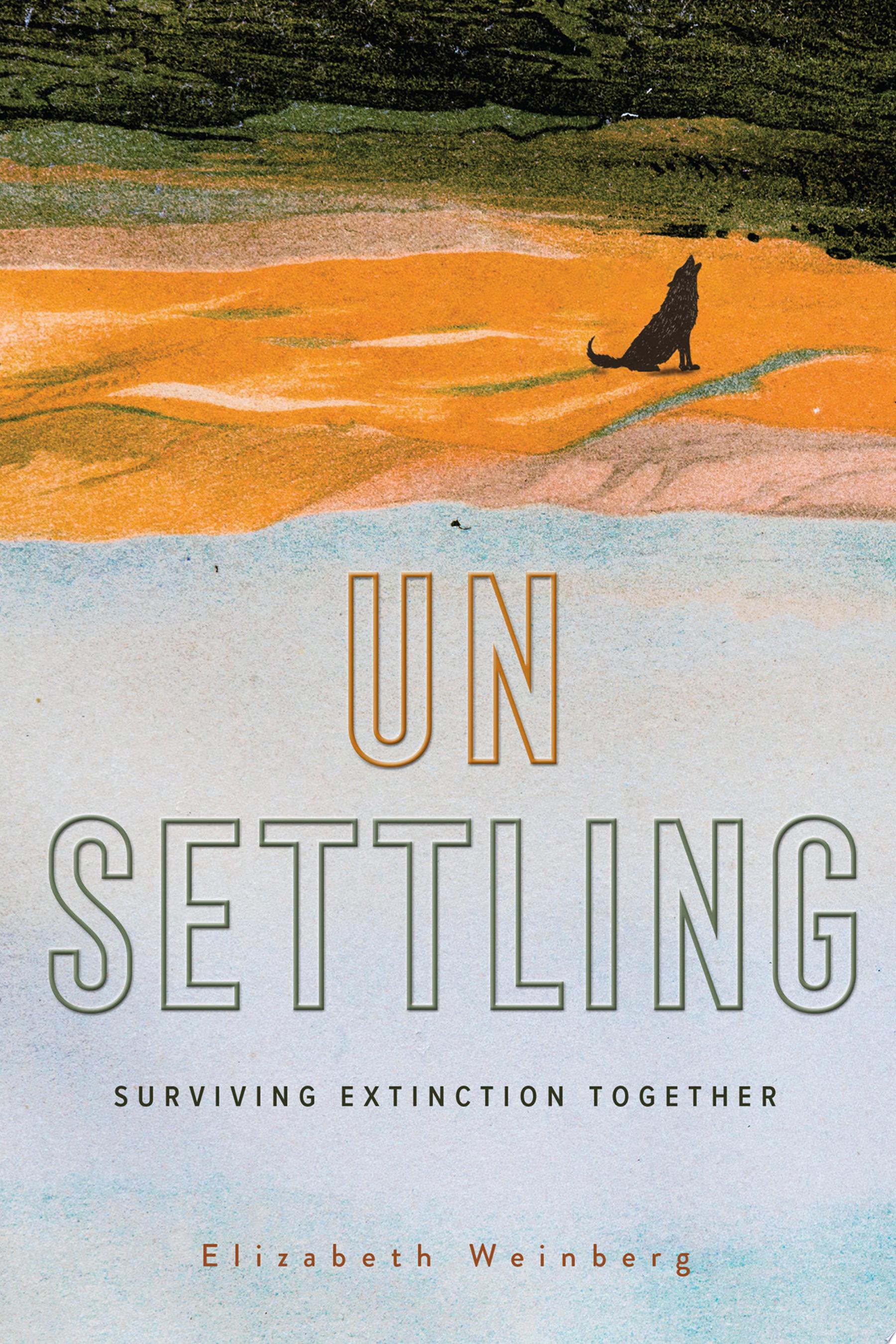
Unsettling: surviving extinction together
The time has come to reimagine our relationship to the environment before it is too late.
As wildfires char the American West, extreme weather transforms landscapes, glaciers retreat, and climate zones shift, we are undeniably experiencing the effects of the climate crisis in more and more destructive ways. Climate change is impacting every inhabited region of the world, but there is much we can still do.
Unsettling explores human impacts on the environment through science, popular culture, personal narrative, and landscape. Using the stories of animals, landscapes, and people who have exhibited resilience in the face of persistent colonization across the North American continent, science writer Elizabeth Weinberg explores how climate change is a direct result of white supremacy, colonialism, sexism, and heteronormativity. Travel through the deep sea; along Louisiana's vanishing bayous; down the Colorado, Mississippi, and Potomac rivers; and over the Cascade Mountains, and examine how we as humans, particularly white humans, have drawn a stark line between human and animal, culture and nature, in order to exploit anything and anyone we find useful. With gorgeous and pointed prose, Weinberg weaves together science, personal essay, history, and pop culture to propose a new way of thinking about climate change--one that is rooted in queerness and antiracism.
-
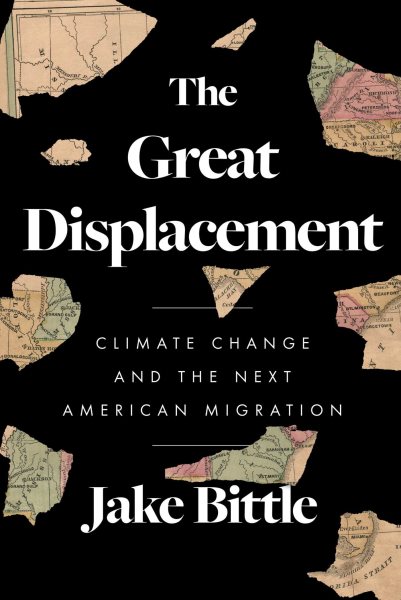
The Great Displacement
“The Great Displacement is closely observed, compassionate, and far-sighted.” —Elizabeth Kolbert, Pulitzer Prize–winning author of Under a White Sky
The untold story of climate migration in the United States—the personal stories of those experiencing displacement, the portraits of communities being torn apart by disaster, and the implications for all of us as we confront a changing future.
Even as climate change dominates the headlines, many of us still think about it in the future tense—we imagine that as global warming gets worse over the coming decades, millions of people will scatter around the world fleeing famine and rising seas. What we often don’t realize is that the consequences of climate change are already visible, right here in the United States. In communities across the country, climate disasters are pushing thousands of people away from their homes.
A human-centered narrative with national scope, The Great Displacement is “a vivid tour of the new human geography just coming into view” (David Wallace-Wells, New York Times bestselling author of The Uninhabitable Earth). From half-drowned Louisiana to fire-scorched California, from the dried-up cotton fields of Arizona to the soaked watersheds of inland North Carolina, people are moving. In the last few decades, the federal government has moved tens of thousands of families away from flood zones, and tens of thousands more have moved of their own accord in the aftermath of natural disasters. Insurance and mortgage markets are already shifting to reflect mounting climate risk, pricing people out of risky areas.
Over the next fifty years, millions of Americans will be caught up in this churn of displacement, forced inland and northward in what will be the largest migration in our country’s history. The Great Displacement compassionately tells the stories of those who are already experiencing life on the move, while detailing just how radically climate change will transform our lives—erasing historic towns and villages, pushing people toward new areas, and reshaping the geography of the United States. -
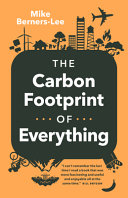
The Carbon Footprint of Everything
"I can't remember the last time I read a book that was more fascinating and useful and enjoyable."--Bill Bryson
Reduce your carbon footprint and understand the issue with this "up-to-date life guide for carbon-conscious readers."--Kirkus
- Calculate your carbon footprint: with an item-by-item breakdown.
- Meet your company's carbon goals: using the latest research.
- Covid-19 and the carbon battle: understand the new global supply chain.
The Carbon Footprint of Everything breaks items down by the amount of carbon they produce, creating a calorie guide for the carbon-conscious. With engaging writing, leading carbon expert Mike Berners-Lee shares new carbon calculations based on recent research. He considers the impact of the pandemic on the carbon battle--especially the embattled global supply chain--and adds items we didn't consider a decade ago, like bitcoin and other cryptocurrencies.
Supported by solid research, cross-referenced with other expert sources, illustrated with easy-to-follow charts and graphs, and written with Berners-Lee's trademark sense of humor, The Carbon Footprint of Everything should be on everyone's bookshelf.
The Carbon Footprint of Everything is an extensively revised and updated edition of How Bad Are Bananas.
-
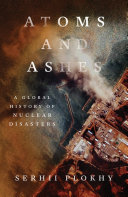
Atoms and Ashes: a global history of nuclear disasters
A chilling account of more than half a century of nuclear catastrophes, by the author of the “definitive” (Economist) Cold War history, Nuclear Folly.
Almost 145,000 Americans fled their homes in and around Harrisburg, Pennsylvania, in late March 1979, hoping to save themselves from an invisible enemy: radiation. The reactor at the nearby Three Mile Island nuclear power plant had gone into partial meltdown, and scientists feared an explosion that could spread radiation throughout the eastern United States. Thankfully, the explosion never took place—but the accident left deep scars in the American psyche, all but ending the nation’s love affair with nuclear power.
In Atoms and Ashes, Serhii Plokhy recounts the dramatic history of Three Mile Island and five more accidents that that have dogged the nuclear industry in its military and civil incarnations: the disastrous fallout caused by the testing of the hydrogen bomb in the Bikini Atoll in 1954; the Kyshtym nuclear disaster in the USSR, which polluted a good part of the Urals; the Windscale fire, the worst nuclear accident in the UK’s history; back to the USSR with Chernobyl, the result of a flawed reactor design leading to the exodus of 350,000 people; and, most recently, Fukushima in Japan, triggered by an earthquake and a tsunami, a disaster on a par with Chernobyl and whose clean-up will not take place in our lifetime.
Through the stories of these six terrifying incidents, Plokhy explores the risks of nuclear power, both for military and peaceful purposes, while offering a vivid account of how individuals and governments make decisions under extraordinary circumstances. Today, there are 440 nuclear reactors operating throughout the world, with nuclear power providing 10 percent of global electricity. Yet as the world seeks to reduce carbon emissions to combat climate change, the question arises: Just how safe is nuclear energy?
-
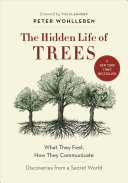
The Hidden Life of Trees: what they feel, how they communicate : discoveries from a secret world
A New York Times bestseller
With more than 2 million copies sold worldwide, this beautifully-written book journeys deep into the forest to uncover the fascinating--and surprisingly moving--hidden life of trees.
"At once romantic and scientific, [Wohlleben's] view of the forest calls on us all to reevaluate our relationships with the plant world."--Daniel Chamovitz, PhD, author of What a Plant Knows
Are trees social beings? In The Hidden Life of Trees forester and author Peter Wohlleben convincingly makes the case that, yes, the forest is a social network. He draws on groundbreaking scientific discoveries to describe how trees are like human families: tree parents live together with their children, communicate with them, support them as they grow, share nutrients with those who are sick or struggling, and even warn each other of impending dangers. Wohlleben also shares his deep love of woods and forests, explaining the amazing processes of life, death, and regeneration he has observed in his woodland.
After learning about the complex life of trees, a walk in the woods will never be the same again.
Includes a Note From a Forest Scientist, by Dr.Suzanne SimardPublished in Partnership with the David Suzuki Institute
-
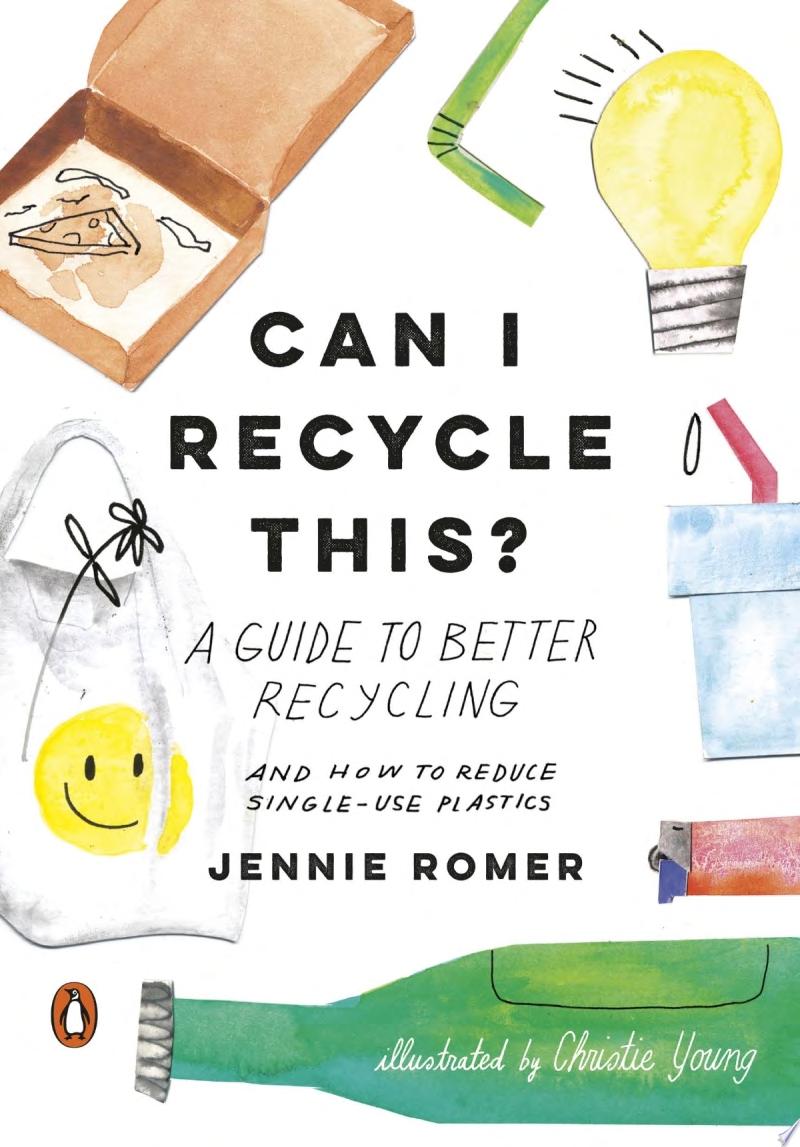
Can I Recycle This?: a guide to better recycling and how to reduce single-use plastics
“If you’ve ever been perplexed by the byzantine rules of recycling, you’re not alone…you’ll want to read Can I Recycle This?... An extensive look at what you can and cannot chuck into your blue bin.” —The Washington Post
The first illustrated guidebook that answers the age-old question: Can I Recycle This?
Since the dawn of the recycling system, men and women the world over have stood by their bins, holding an everyday object, wondering, "can I recycle this?" This simple question reaches into our concern for the environment, the care we take to keep our homes and our communities clean, and how we interact with our local government. Recycling rules seem to differ in every municipality, with exceptions and caveats at every turn, leaving the average American scratching her head at the simple act of throwing something away. Taking readers on a quick but informative tour of how recycling actually works (setting aside the propaganda we were all taught as kids), Can I Recycle This gives straightforward answers to whether dozens of common household objects can or cannot be recycled, as well as the information you need to make that decision for anything else you encounter.
Jennie Romer has been working for years to help cities and states across America better deal with the waste we produce, helping draft meaningful legislation to help communities better process their waste and produce less of it in the first place. She has distilled her years of experience into this non-judgmental, easy-to-use guide that will change the way you think about what you throw away and how you do it. -
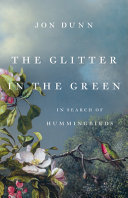
The Glitter in the Green: in search of hummingbirds
"Hummingbirds are a glittering, sparkling collective of over three hundred wildly variable, colorful species. For centuries they have captured our imaginations - revered by indigenous Americans, coveted by European collectors, and to this day admired worldwide for their unsurpassed metallic, jewel-like plumage, acrobatic flight, and immense character. Yet they exist on a knife-edge -- theirs is a precarious life, dependent upon finding sufficient nectar to provide the high energy their bodies demand daily. They live fast and die young. And they do this in habitats that range from boreal woodlands to deserts, from dripping cloud-forests to montane paramo, and on islands both tropical and sub-polar. They are, perhaps, the ultimate embodiment of evolution's power to carve a niche for a seemingly delicate creature in even the harshest of places. The Glitter in the Green tells the colorful story of these fabulous birds -- their history, their compelling life cycles, and their perilous position in a changing landscape -- and the stories of the people, past and present, whose lives have been shaped by the zealous passion hummingbirds inspire. Enthusiastic amateur birdwatchers, conservation workers, scientists, smugglers, witches, and celebrities -- all have been consumed in one way or another with passion for the most remarkable family of all the birds. Travelling the full length of their worldwide range, from the very edge of the Arctic Circle to the sub-Antarctic islands off the tip of South America, acclaimed nature writer Jon Dunn embarks on a search for the most remarkable examples of their kind, exploring their rich cultural heritage, and encountering a host of human characters as colorful as the birds themselves"--
-
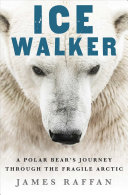
Ice Walker: a polar bear's journey through the fragile Arctic
From bestselling author James Raffan comes an enlightening and original story about a polar bear’s precarious existence in the changing Arctic, reminiscent of John Vaillant’s The Golden Spruce.
Nanurjuk, “the bear-spirited one,” is hunting for seals on Hudson Bay, where ice never lasts more than one season. For her and her young, everything is in flux.
From the top of the world, Hudson Bay looks like an enormous paw print on the torso of the continent, and through a vast network of lakes and rivers, this bay connects to oceans across the globe. Here, at the heart of everything, walks Nanurjuk, or Nanu, one polar bear among the six thousand that traverse the 1.23 million square kilometers of ice and snow covering the bay.
For millennia, Nanu’s ancestors have roamed this great expanse, living, evolving, and surviving alongside human beings in one of the most challenging and unforgiving habitats on earth. But that world is changing. In the Arctic’s lands and waters, oil has been extracted—and spilled. As global temperatures have risen, the sea ice that Nanu and her young need to hunt seal and fish has melted, forcing them to wait on land where the delicate balance between them and their two-legged neighbors has now shifted.
This is the icescape that author and geographer James Raffan invites us to inhabit in Ice Walker. In precise and provocative prose, he brings readers inside Nanu’s world as she treks uncertainly around the heart of Hudson Bay, searching for nourishment for the children that grow inside her. She stops at nothing to protect her cubs from the dangers she can see—other bears, wolves, whales, human beings—and those she cannot.
By focusing his lens on this bear family, Raffan closes the gap between humans and bears, showing us how, like the water of the Hudson Bay, our existence—and our future—is tied to Nanu’s. He asks us to consider what might be done about this fragile world before it is gone for good. Masterful, vivid, and haunting, Ice Walker is an utterly unique piece of creative nonfiction and a deeply affecting call to action. -
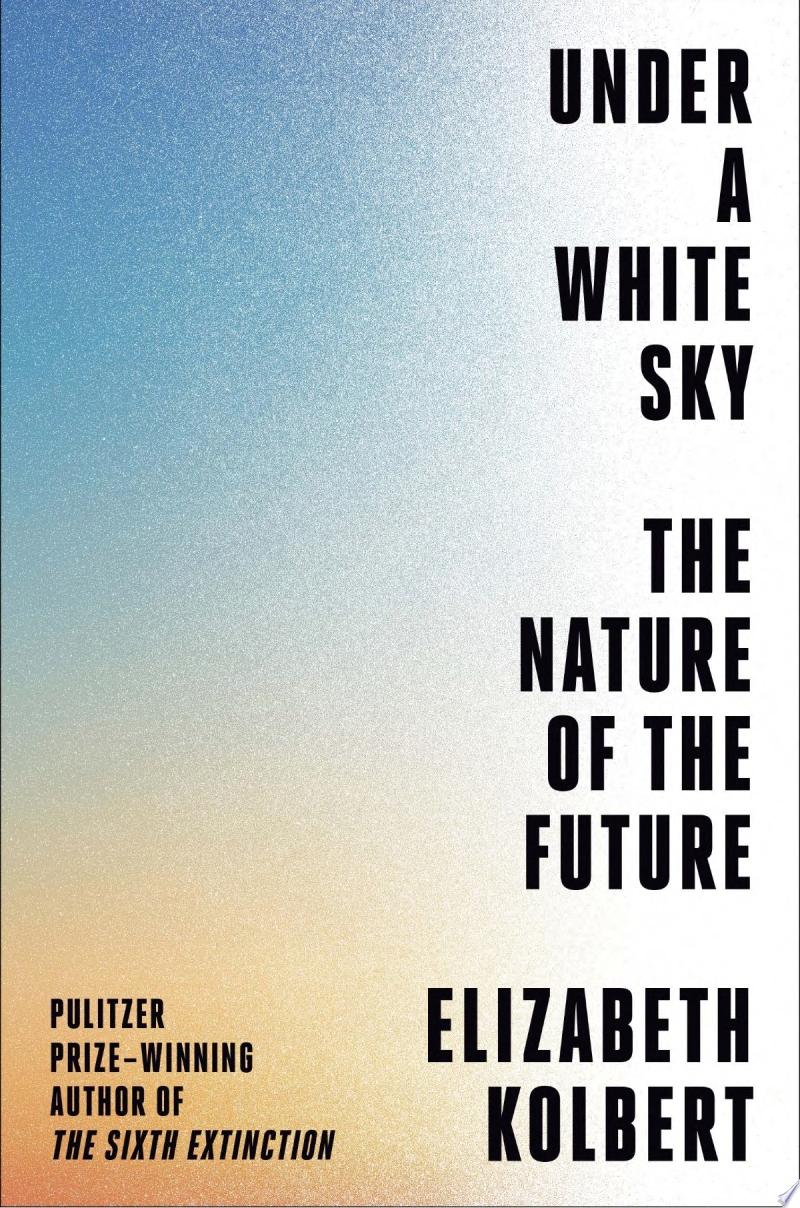
Under a White Sky: the nature of the future
NATIONAL BESTSELLER * The Pulitzer Prize-winning author of The Sixth Extinction returns to humanity's transformative impact on the environment, now asking: After doing so much damage, can we change nature, this time to save it?
RECOMMENDED BY PRESIDENT OBAMA AND BILL GATES * SHORTLISTED FOR THE WAINWRIGHT PRIZE FOR WRITING * ONE OF THE TEN BEST BOOKS OF THE YEAR: The Washington Post * ONE OF THE BEST BOOKS OF THE YEAR: Time, Esquire, Smithsonian Magazine, Vulture, Publishers Weekly, Kirkus Reviews, Library Journal * "Beautifully and insistently, Kolbert shows us that it is time to think radically about the ways we manage the environment."--Helen Macdonald, The New York Times
That man should have dominion "over all the earth, and over every creeping thing that creepeth upon the earth" is a prophecy that has hardened into fact. So pervasive are human impacts on the planet that it's said we live in a new geological epoch: the Anthropocene.
In Under a White Sky, Elizabeth Kolbert takes a hard look at the new world we are creating. Along the way, she meets biologists who are trying to preserve the world's rarest fish, which lives in a single tiny pool in the middle of the Mojave; engineers who are turning carbon emissions to stone in Iceland; Australian researchers who are trying to develop a "super coral" that can survive on a hotter globe; and physicists who are contemplating shooting tiny diamonds into the stratosphere to cool the earth.
One way to look at human civilization, says Kolbert, is as a ten-thousand-year exercise in defying nature. In The Sixth Extinction, she explored the ways in which our capacity for destruction has reshaped the natural world. Now she examines how the very sorts of interventions that have imperiled our planet are increasingly seen as the only hope for its salvation. By turns inspiring, terrifying, and darkly comic, Under a White Sky is an utterly original examination of the challenges we face. -
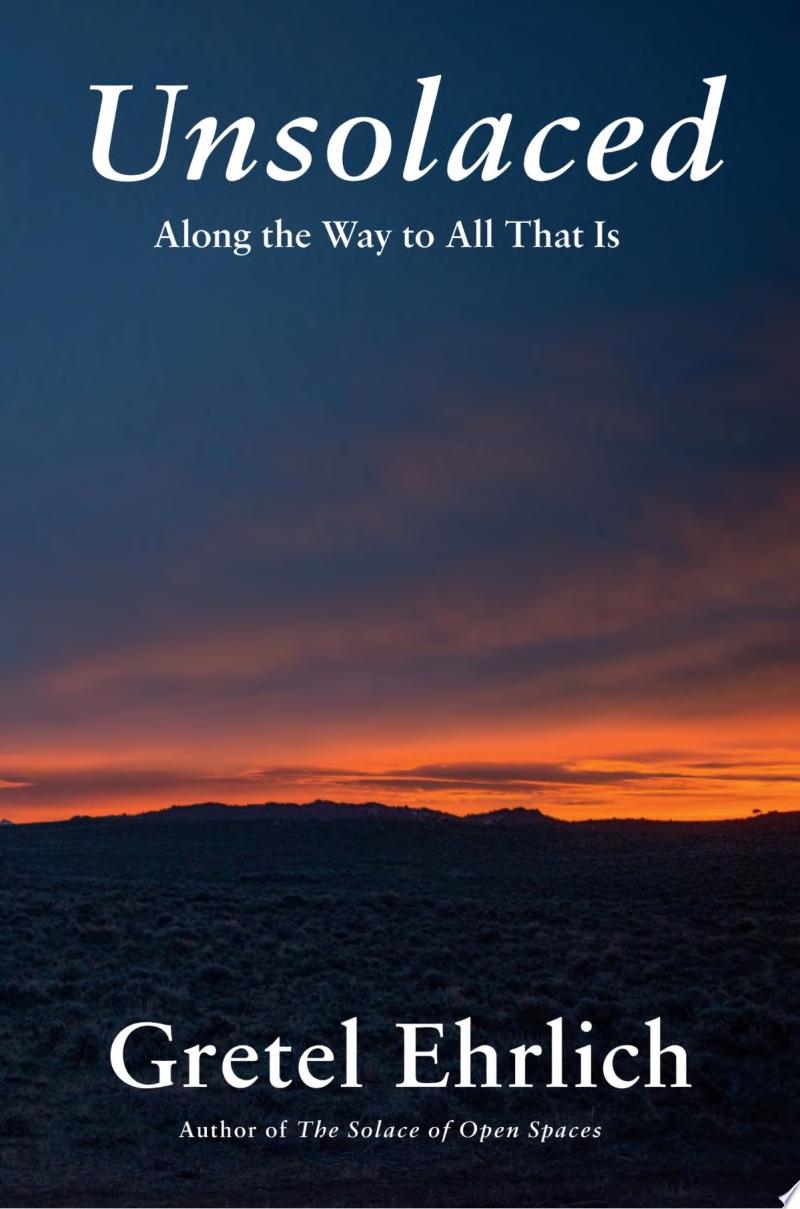
Unsolaced: along the way to all that is
"From one of our most intrepid and eloquent adventurers of the natural world: an account of her search for home--experiences traveling in Greenland, the North Pole, the Channel Islands of California, Japan; of herding animals in Wyoming and Montana, and her embrace of the balance between the ordinary and celestial. In The Solace of Open Spaces, Gretel Ehrlich announced her aspiration as a writer to assign the physical qualities of the earth--weather, light and wind--to our contemporary age. In Unsolaced, thirty-five years later, Ehrlich shows us how these forces have shaped her experience and her understanding as she recalls the split-end strands of friendships spliced to new loves, houses built and lived in, conversations that shifted outlooks, as she tries to catch a glimpse of herself and the places she has sought as an anchor for her spirit. Ehrlich's quest is not for the comfort of permanence, but for transience, the need to be unsettled--to find stillness in the disquiet of engagement, to find in the landscapes of earth, ice, climate, genetic mayhem, and shifting canvas of memory--the possibility of longing. Ehrlich's voice is a unique amalgam of poetry and science, her attention held fast by the vegetation and animals she cares for, the lyric exaltation of insight that gives both her and her readers an intimation of a greater whole"--


